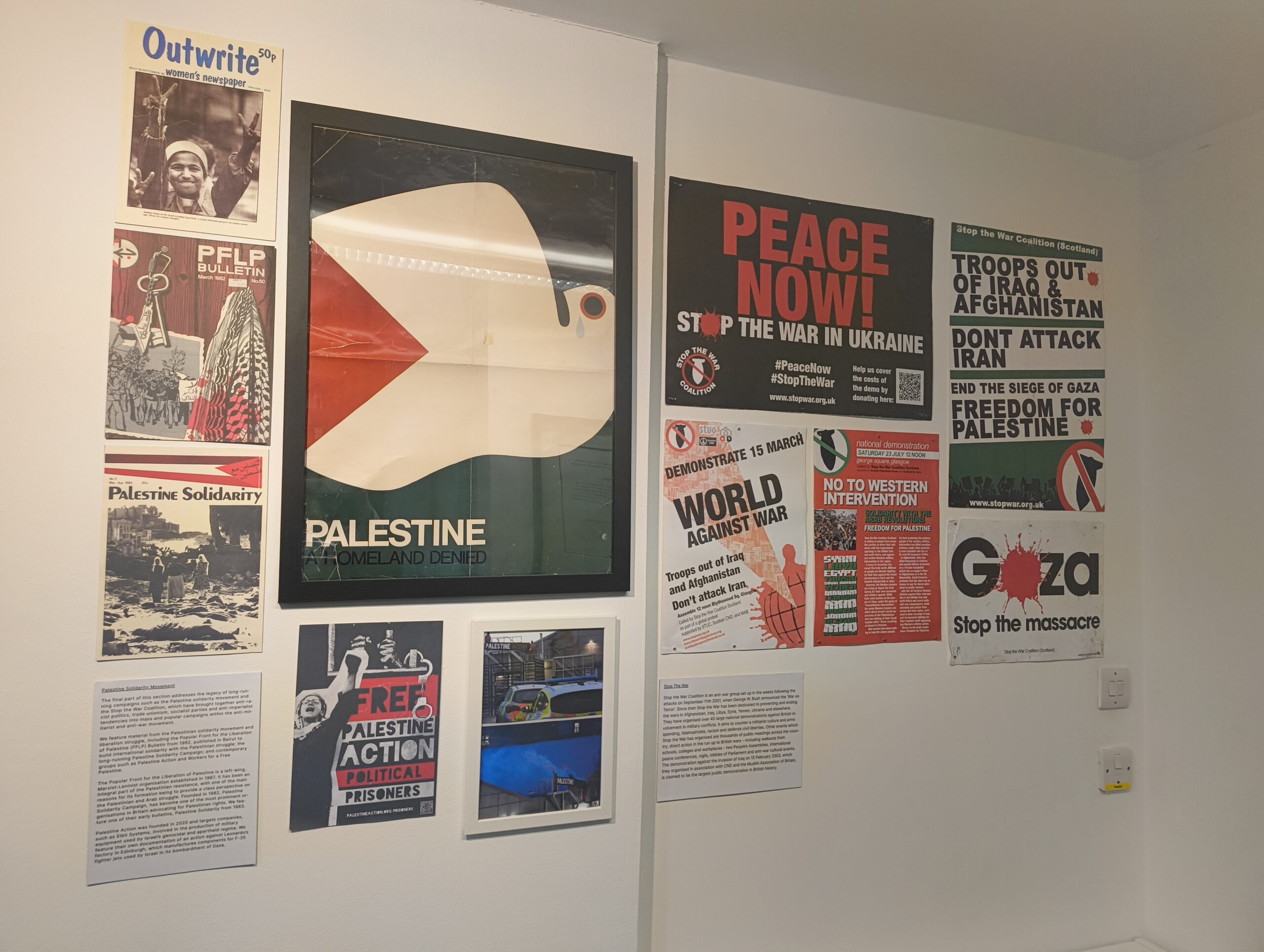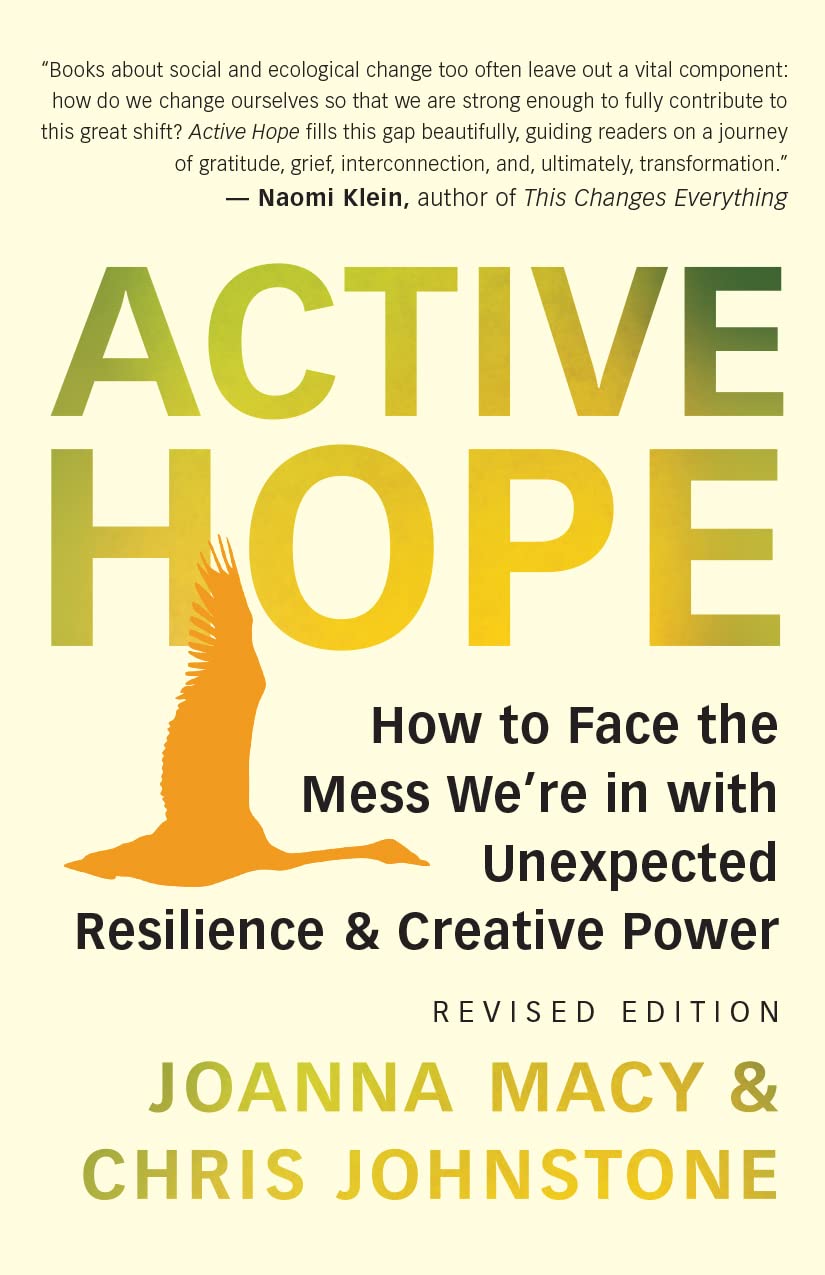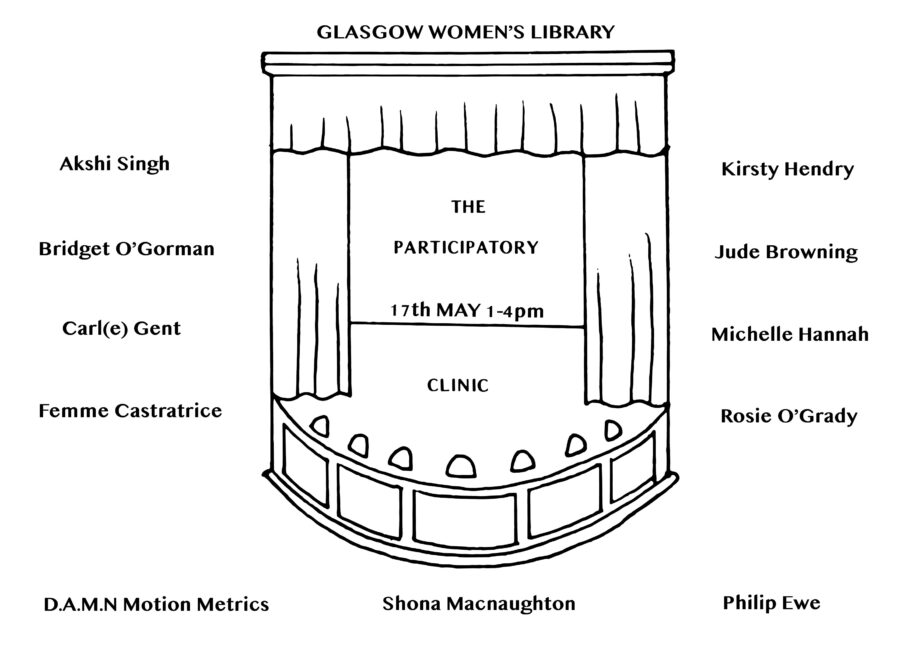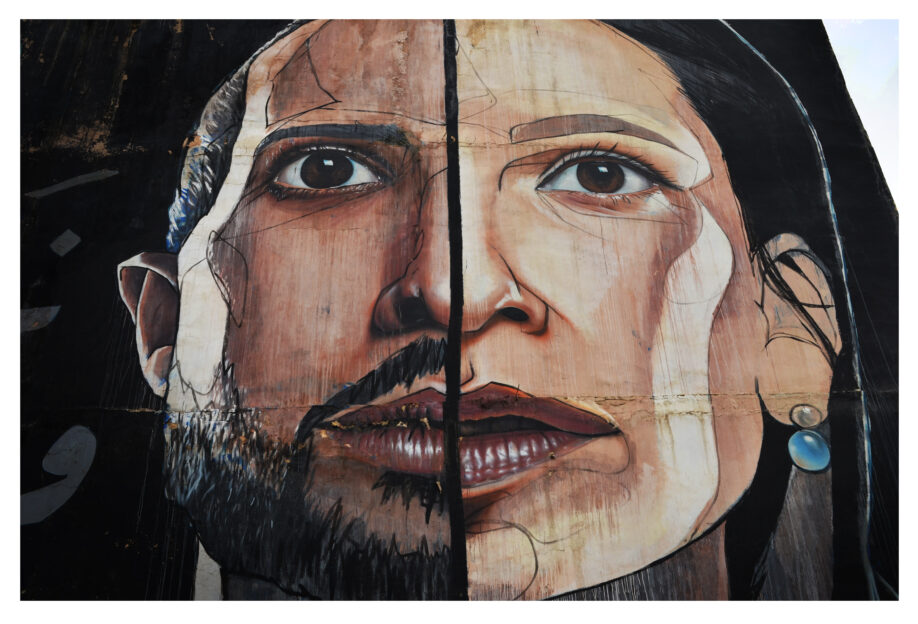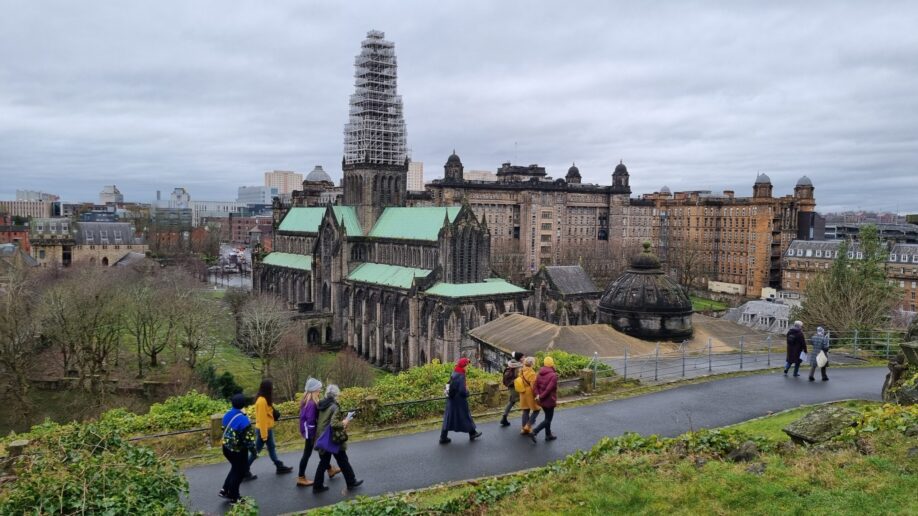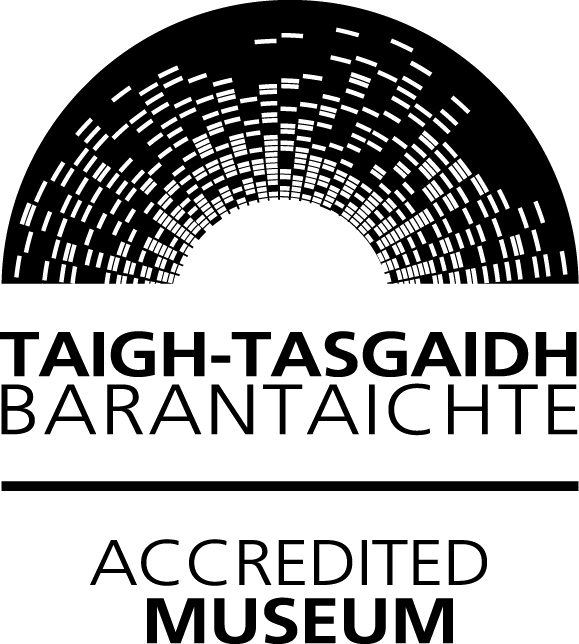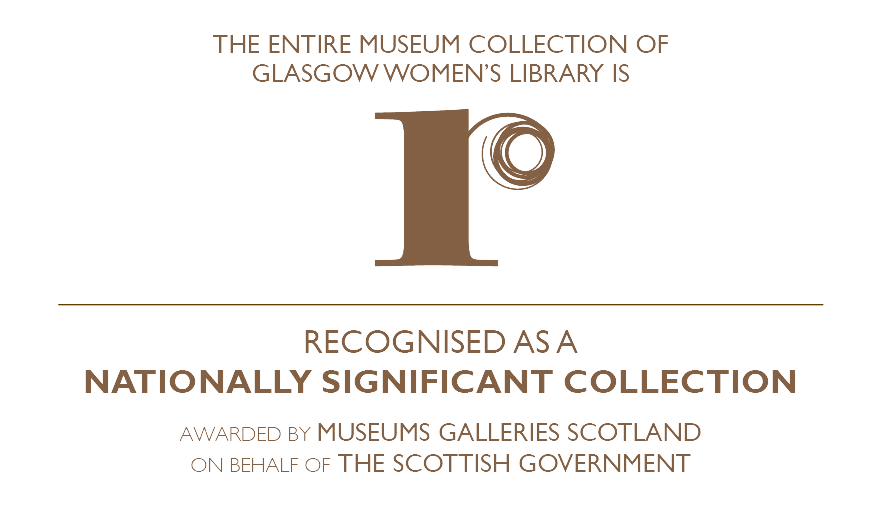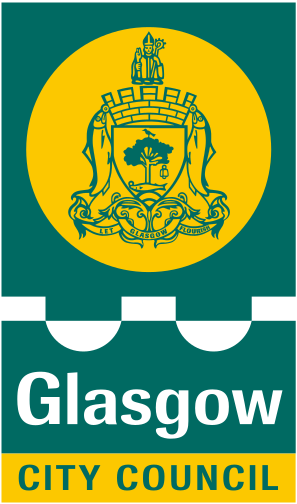
As a female voter in the UK, I’ve always been immensely grateful to the many women who campaigned for my right to the franchise before such a thing was considered a ‘given’. Despite often feeling disenchanted with modern politics, I always vote – if only as a mark of respect for the sacrifices that were made for my right to do so. There must be few people left who haven’t heard of the intrepid Pankhursts, or Emily Davidson, who died for the cause. I know that I was made aware of these remarkable women from a very early age by the women of my mother’s and my grandmother’s generations, who believed that the right to vote was and is a right which must be practiced. I moved to Scotland as an adult, and I wanted to learn more about the role the suffragettes played in the development of Scottish politics in the early twentieth century. I thought this event would fit the bill nicely. I was not disappointed.
Adele Patrick (Lifelong Learning and Creative Development Manager at Glasgow Women’s Library) opened the event with an introduction to the Firebrand Women project. Adele explained that the project was intended to invite the contribution of ideas to a shared and accessible celebration and recording of women’s history, particularly within a local context, which also marks the move to Glasgow Women’s Library’s new premises in Landressy Street, Bridgeton. Adele gave us some insight into the plans for the new premises, including the ways in which the move will facilitate access to a wider range of reading materials and archives, and a spacious reading facility which will allow members more space to work and to engage with the various materials held by the Library. This is an exciting time for the development of a priceless, unique facility for the women of Glasgow (and Scotland more widely).
Adele went on to introduce Donna Moore (Adult Literacy and Numeracy Development Worker at GWL), who spent the next hour and a half or so presenting us with facts, stories, images and footage from the GWL archive. Donna began by getting us thinking about the evolution of women’s franchise across the world, and pointed out that the first country to give women the vote on the same basis as men was New Zealand in 1893. By comparison, women in the UK would have to wait until 1928 to receive the franchise on the same basis as their male compatriots. As well as touching on the opposition of the Church of England and the Royal Family to women’s suffrage, Donna also highlighted some of the more rambunctious and bizarre examples of opposition, including the extraordinary ‘Fifteen Good Reasons Against the Grant of Female Suffrage’ of Lord Curzon, wherein reasons such as women lacking “the calmness of temperament”, and the maternal “proper sphere”, are listed as ‘good’ reasons against them having the vote. What was accepted then is, needless to say, scarcely credible now!
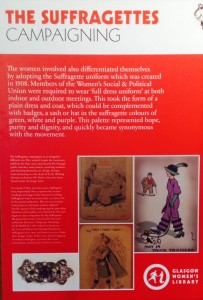
Donna explained the importance of the Cat and Mouse Act of 1913 and how this resulted in a cyclical process of authorities releasing hunger-striking suffragettes long enough for them to eat and become healthy before re-imprisoning them. As such, many suffragettes were imprisoned over several periods of time in order to complete their sentences. The practice of force-feeding emerged as a response by the prison authorities to suffragettes who went on hunger strike, intended to prevent them from becoming too ill to remain imprisoned. Donna explained that force-feeding by tube could result in food being passed into the lung rather than into the stomach, which could lead to illnesses including pneumonia. This was clearly a painful, dangerous and humiliating process for the woman involved, and it is perhaps not entirely surprising that suffragettes who went on hunger strike received medals to acknowledge their commitment (Donna showed us a picture of one suffragette wearing several hunger strike medals).
Donna also told us a little about the Women’s Freedom League protest on Glasgow Green (1914), and introduced us to a few particularly committed suffragettes, including Helen Crawfurd, who was imprisoned in both Holloway Prison and Duke Street Prison during a prolific career of window-breaking, and Janie Allan, who barricaded herself into her cell at Holloway and repulsed several police officers with crowbars in a stand against the practice of force-feeding within that prison. We also heard a little about Jessie Stephen, who encouraged domestic staff to join unions, and the irrepressible Flora ‘The General’ Drummond, who became a living symbol of the suffragette movement in Scotland. Donna also touched upon the class system in the UK in the early twentieth century, and the existence of the suffragette movement within this framework.
It transpires that the Governor of Duke Street Prison in Glasgow was, to a certain extent, sympathetic to the suffragettes, and that force-feeding by tube never occurred there. On this subject, Donna showed us a picture of a particularly evocative item in the archive – an umbrella stand which was given by the Governor to the imprisoned suffragettes for them to paint (it is painted in colours as close to the suffragette colours of purple, white and green as was possible with the materials the prisoners had). As part of the recent 21 Revolutions project, which marked the 21st anniversary of GWL, 21 artists and writers were invited to contribute new work based on a favourite item from the GWL archive. Donna read a story she had written for the project, entitled ‘The Mouse’s Umbrella’, which was inspired by this wonderful item. You can hear Donna read her story on the GWL podcast here. It is a transfixing, profound and sad story, and we all sat listening in utter silence as she read on the night. For me, hearing how Donna had been inspired and moved by this one feature of such a considerable archive was the highlight of the entire evening, and it left me wondering whether any of these women, while they were campaigning in the face of what must have felt like insurmountable opposition and barbaric treatment, ever came close to forgetting what it was all for. Had it been me, I hope I would have had their courage. I doubt it, but I hope nonetheless!
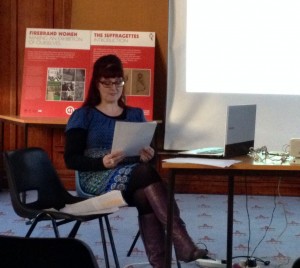
Towards the end of the evening, Donna showed us some more photographs of some of items in the GWL archive which evoke beautifully the spirit of the suffragette movement, including brooches, playing cards and a wonderful, hand-illustrated autograph book. We saw a range of postcards, some of which had been written on, sporting pictures and slogans both for and against women’s suffrage – it was enlightening to see the highly artistic, adroit propaganda from both sides of the issue, and to see how it is not always clear today whether a message or an item was intended to promote or discredit women’s franchise. We also saw some fabulous archive footage from the 1909 WSPU pageant in Edinburgh, and heard the remarkable story of the ‘Battle of Glasgow’ on 9th March 1914, when Emmeline Pankhurst was removed during her speech at St Andrew’s Halls to the riotous response of the gathered throng and a Jujitsu-trained WSPU ‘bodyguard’.
Donna brought her presentation to a close by pointing out that World War I saw suffragettes pulling together with the rest of the nation in the name of the war effort, and the eventual introduction of the Representation of the People Act 1918, which introduced the franchise to women over the age of 30 who met a minimum property qualification. While not constituting the franchise on an equal basis with men, the Act of 1918 is widely accepted as having been a significant precursor to the eventual Representation of the People (Equal Franchise) Act of 1928.
I would like to thank GWL and Adele Patrick for arranging and hosting this fantastic, fun and educational evening. My particular thanks go to Donna Moore, whose efforts were deeply appreciated and whose enthusiasm is contagious!
If you would like to know more about GWL projects including Firebrand Women and 21 Revolutions, to find out how to get involved or simply to find out what’s on at the Library, the GWL website gives you all the information you need. You can also follow GWL on Facebook, and on Twitter @gwlkettle. The Library opens at the new Landressy Street premises on 11th November, so if you want to find out more about the suffragette movement, related organisations, prominent suffragettes and more, be sure to pay a visit.
Rebecca Jones

